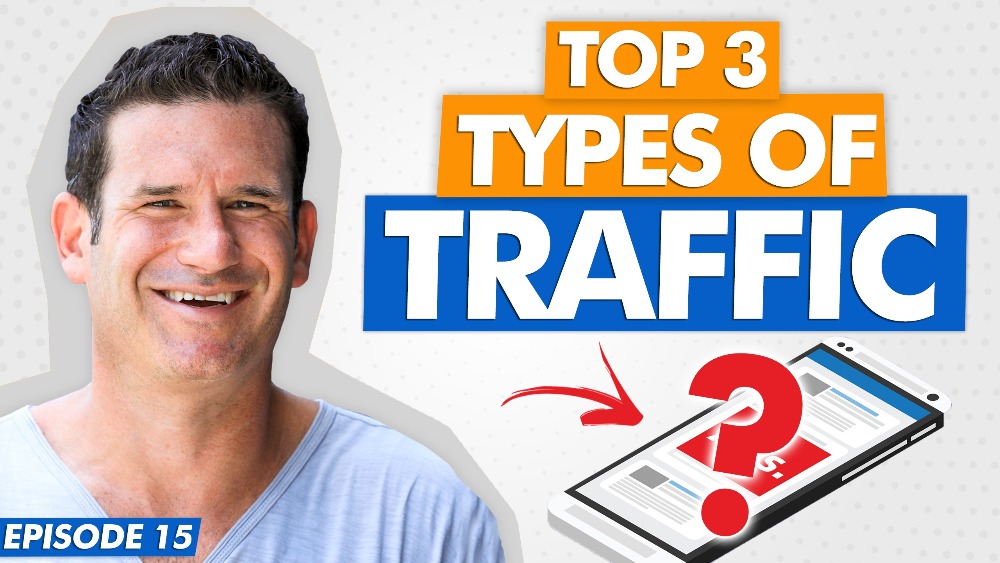
13 Feb 3 Fundamental Types Of Traffic For Your Offers & Products
Digital marketing seems pretty intimidating to a lot of people – at least until they learn to master the basics. Once you have a strong foundation, everything else becomes a lot easier because it just keeps falling into place.
So today is a good day! Today, I’m going to break down the essence of the entire business by providing you with a crash course on web traffic.
Why Is Traffic So Important for Performance Marketing?
“Traffic on the Internet is the exact same thing as in real life when somebody is walking into a store.” – Eric Beer
Web traffic is one of the key components of digital marketing. It reflects the number of visits people make on a particular page somewhere on the web. In simple digital marketing terms, it represents people getting to your funnel. For marketers, traffic is a fundamental metric that can speak worlds about your marketing campaign and the quality of your funnels.
There are three fundamental types of traffic that we can measure.
Earned Traffic
This type of traffic is also called organic and its characterized by the fact you didn’t pay for it. It wasn’t a result of an ad campaign on Facebook or any other paid advertising arrangement. Organic traffic is earned in ways such as having high search rankings for popular keywords. Another way for it to appear is in cases you get free promotion from a social media influencer.
Paid Traffic
As you can probably tell by the name, this is the traffic that you spent money on getting. The complete opposite of earned traffic. When you get this kind of traffic, it’s usually a direct result of your advertising campaigns. Each click and visit to your funnel has been paid for in some direct way.
Affiliate Traffic
Affiliate or joint venture traffic is the core of performance marketing. It is a hybrid of the first two types. You’re not paying for ad space, your affiliates provide that for free, as part of the deal. But if a person reaches your funnel through an affiliate ad, you end up paying for every predefined relevant action that a person makes on your page.
For example, if a person is scrolling through a blog post of your affiliate and clicks on a link that directs them to your funnel – that’s free. But if a person subscribes to your mailing list, buys your product, or performs any action that’s particularly valuable to you – that is what you pay for.
How to Take Control of Your Traffic
All of these methods can get you traffic but the real value shows up once you learn how to control it. And the way you do that is through capturing data.
When you create a funnel, your goal should be to track or acquire a specific piece of information from your visitors. You’re looking to get an email or a phone number or any other piece of data that will allow you to control who sees your message and when. That’s the ultimate goal of traffic.
The Two Types of People on the Internet
From a digital marketing standpoint, it’s useful to differentiate between two basic types of people on the web – the searchers and the scrollers.
The searcher is the kind of person that’s browsing through the Internet, searching for something they want in particular. They got online with a goal to find something and their search terms reflect intent. When they type in a query in Google, one hand is already on their wallet. Their searches sound something like “used cars best price” or “plain tickets to Barcelona”. People who are searching for terms related to your offer while showing clear buyer intent are high-quality leads and their data is extremely valuable for your business.
Scrollers, on the other hand, are people who’re just browsing the online space to inform themselves on a particular topic or just for pure entertainment. They’re scrolling their Facebook and Instagram profiles, reading the news, or checking out “how-to” articles. But the really important thing about them is that they don’t care about your offer. That’s not why they’re online. So in this case, you’re looking to create a pattern interruption using an engaging hook that would grab their attention and guide them to your funnel – a place where you can get their data.
“You don’t create traffic. You just get out in front of it.” – Eric Beer
Differentiating between these two types of people allows you to carve out a strategy and frame your message.
How Is Data Giving You Control of Your Traffic?
There are all sorts of ways for hacking your way to getting traffic whether it’s earned, paid or a result of an affiliate referral. But if you’re not acquiring data, all of your efforts are a short-term solution. A one time only kind of deal. And that’s not a way to scale a business.
By gathering data you’re taking control of your traffic, media and messaging, all the while saving money you’d actually be giving to Facebook, Google or wherever you’re used to doing your advertising.
It feels good when you know people are drawn to your funnel but only when you’re able to create an extensive database of relevant contacts from that hype – that’s when you start making real money. And the fun is just getting started!